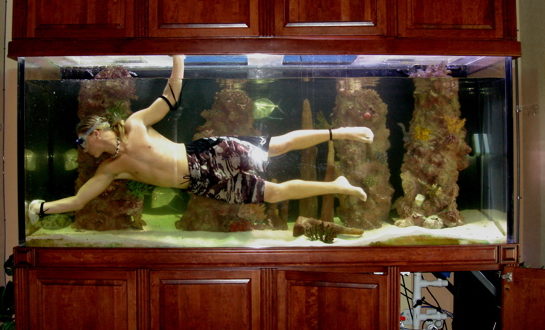If you ask most level-headed reef hobbyists, one of the most enjoyable parts of the game is stocking our systems with corals and fishes. Now, on the surface, this seems like just a super-fun thing to do- and it IS- but it involves some research, decision-making, trade-offs (yikes!)…and if you REALLY want to be successful in the long term- a PLAN. Yup, you need to have some direction.
We’ve all had the wonderful “community tanks” in our childhood, where we added a few Neon Tetras, some Swordtails, a bunch of Rasbora, a Gourami, and a Barb or two, and kind of enjoyed the intercontinental “mashup” of species, living together in what we perceive to be relative harmony.
As you suspect, it’s really NOT the same way with reef tanks. Oh, sure, you can mix stuff from different oceans and locales, but you’d be well-served NOT to mix too many different TYPES of corals together. You CAN- and there is no “rule” that says you can’t…but if you’re in this for the long haul, it makes enormous sense to “specialize” just a bit from day one. There are tradeoffs for “mixing and matching” that leave a lot to be desired.
First Lesson In Stocking
The first, and most important lesson about stocking that I think we all need to face up to as reefers is that you can’t have it all in one normal-sized tank…well, not if you expect long-term health for all of your corals. Again, despite what you see, and despite the various examples of wildly-mixed reef tanks you see, it’s simply not advisable…Unless you engage in very disciplined husbandry technique (like rigorous adherence to a weekly water change schedule and use/replacement of activated carbon or other chemical filtration media), you’ll eventually notice that some of your corals- or most of them, even– won’t be at their best most of the time. Chemical compounds released by various corals (particularly the soft corals) can take a toll over time. It’s a real “chemical soup” in a closed reef aquarium, with competition for space and nutrients at a real premium, just as it is on the wild reefs.
Yet, in the confines of a closed system, these affects are magnified…it’s a “dance”- one which ultimately can have negative consequences, particularly if you lack the discipline to properly maintain your aquarium. Again, I’m not trying to spell “doom and gloom”…I’m just offering a healthy dose of reality. And sure, you can show me 400 photos of mixed reefs that are working just fine…But there’s a lot of underlying questions you’d have to ask about HOW these systems are run, and what kinds of compromises are in play, and how long they’ve been running, etc.
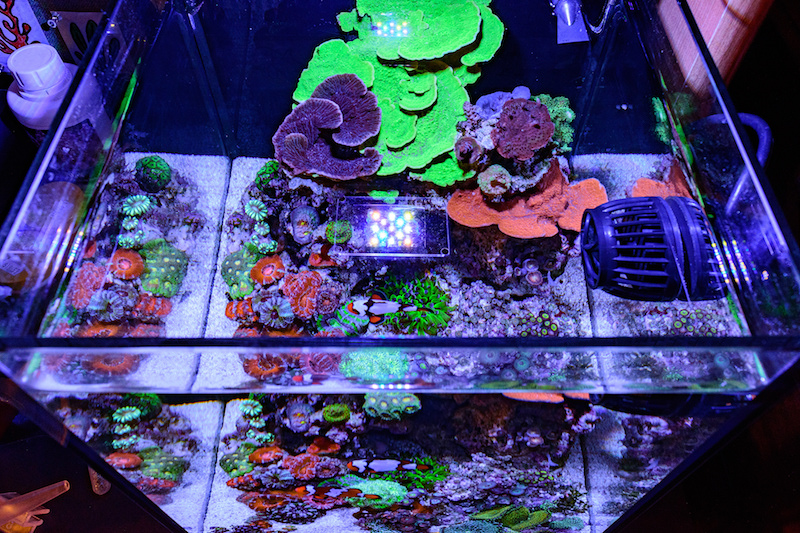
Compromises? Yup, as in, “It’s a really BAD idea to try to keep all sorts of stuff together in a modest-sized aquarium, particularly your very first reef tank.”
Yeah, that means no stinging cnidarians (anemones, etc.) in a tank with so-called “SPS” corals, limited or no introductions of noxious soft corals (like Cladiella, Sinularia, Sarcophyton) with more sensitive Acropora and such, and understanding the unique needs of some of the more aggressive “intermediate-type” corals, like Pectinia, etc.
Look, I’m not trying to dissuade you from trying to build your dream reef from day one. I’m just kind of hitting you over the head with the realities of the situation. Mixing all sorts of corals in the confines of a modest sized aquarium is a recipe for potential problems at some point. And the “some point” could come at any time. It can manifest itself slowly, with some corals gradually fading over time. Or with others being slowly smothered out by more aggressive specimens. Or, you could see flat-out physical “attacks” and “battles” occurring between corals (check out Galaxea or some Euphyllia colonies in a mixed reef if you don’t believe me…it’s seriously aggressive!).
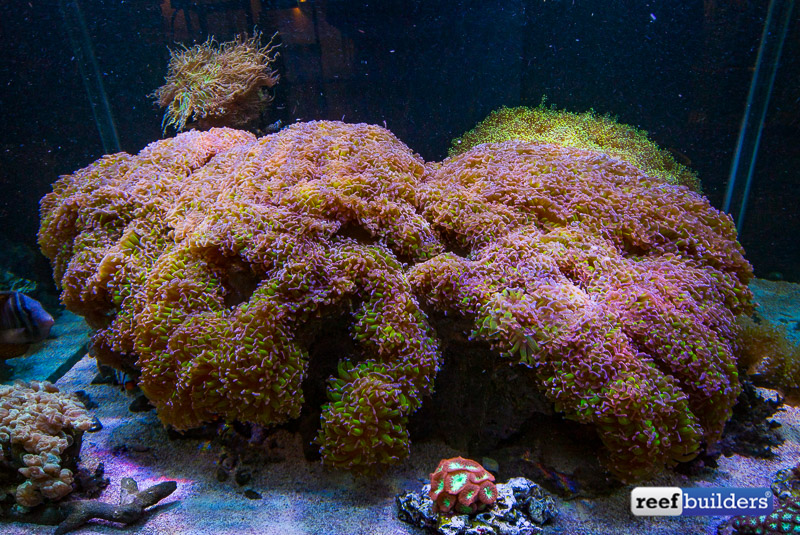
Again, the “best attributes” of great reefkeepers- patience and knowledge, are your friends here. And the next attribute we need to instill into you is compromise. It’s so important to know that great reefs don’t come from a reefer saying “Yes!” to every coral and animal on the list. They come from having the wisdom- the courage- to say, “Nope, can’t add that one into this mix!”
And here’s one thing I’m going to throw out there that’s almost certain to be controversial:
In my opinion, a novice reefer can certainly start with some captive-propagated “SPS” corals…yeah, Acros- IF their needs are met. (obviously, you noticed the “qualifier” here). Most of the more common Acropora in the hobby are actually quite straightforward in their care. You need to learn about their needs before you start plunking down the cash.
Ask questions until you think everyone hates you- and then ask some more. Avoid wild Acropora colonies, because they are not only a precious resource but they have other challenges and risks related to handling, acclimation, and care that, in my opinion, make them better suited for individuals and businesses that wish to use them as “broodstock” for propagation (and thus lessen our dependence on wild colonies). I could go on and on, but let’s leave it at that for now.
Yes, I believe that it’s entirely possible to start with the stony corals, and here’s why: In my opinion, having seen and worked with thousands of corals over the years, both personally and professionally (as the former co-owner of a coral propagator/importer), I can tell you that many of them are remarkably forgiving, and surprisingly adaptable in general. If you’ve committed yourself to learning the basics of reef aquarium husbandry, properly equip your aquarium, monitor your basic water chemistry regularly, engage in regular, frequent water changes, and provide a stable environment, I see no reason why you can’t.
It’s about effort, knowledge, and follow through on applying what you’ve learned. Another part of the “process” of reefing that we alluded to in previous installments.
And quite honestly, there are temperamental species of many so-called “beginner’s corals”, like soft corals and zoanthids, that can give you just as much trouble as an Acro. And with the excellent equipment available today at a wide variety of price points, it’s easier than ever to properly equip a reef system to enable long-term success from the outset, if you’re so committed.
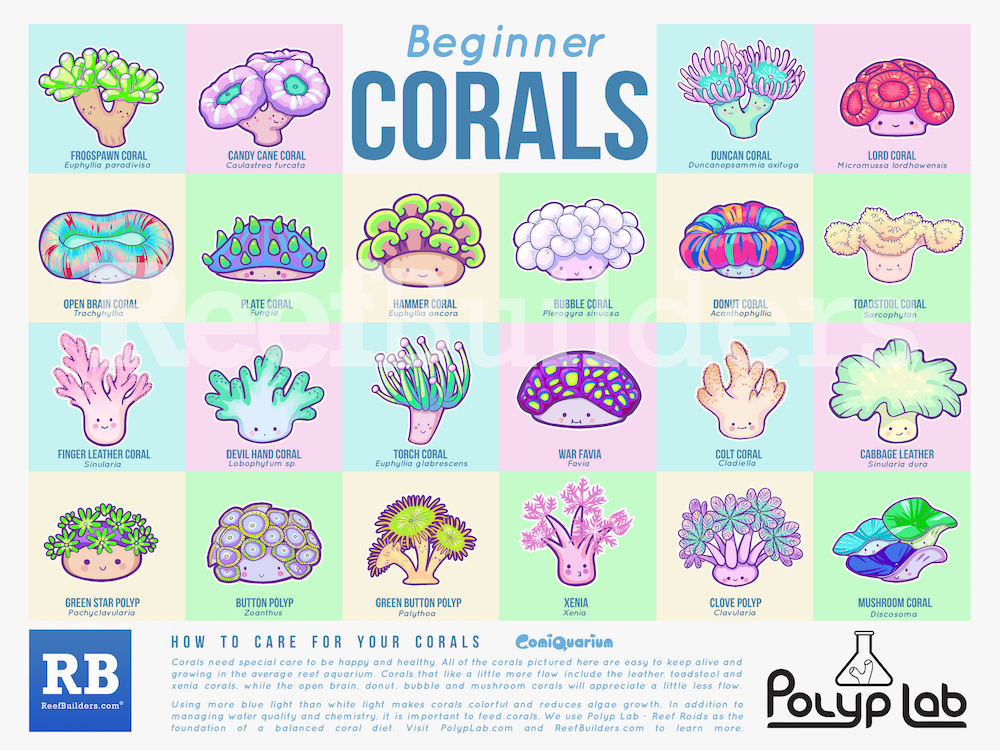
Learn The Proper Care
The bottom line: You can’t keep ANY coral successfully if you’re not willing to learn about their basic needs, understand the need for environmental stability, and keep a well-maintained, properly-equipped aquarium. If you’re a lousy hobbyist and simply don’t want to put in the effort in all of these areas, you’ll fail regardless of what types of corals you keep. It’s that simple.
Now, notice I said “most” Acropora? Of course, there are dozens of species and varieties that are touchy and difficult, regardless of source. “Experts” kill them with almost predictable regularity. If you do your homework and ask questions, you’ll easily learn which ones fall into this category.
The main takeaway is that the well-trodden path that suggests a new reefer should “start with softies and move up to ‘SPS’ corals” is a bit over-generalized, IMHO. Sure, They won’t “RTN” out on you overnight if they’re not happy, but they’ll let you know in many other (often stinky) ways. Reefkeeping is not about “easy.” It’s about doing things correctly and getting good results..enjoying the process.
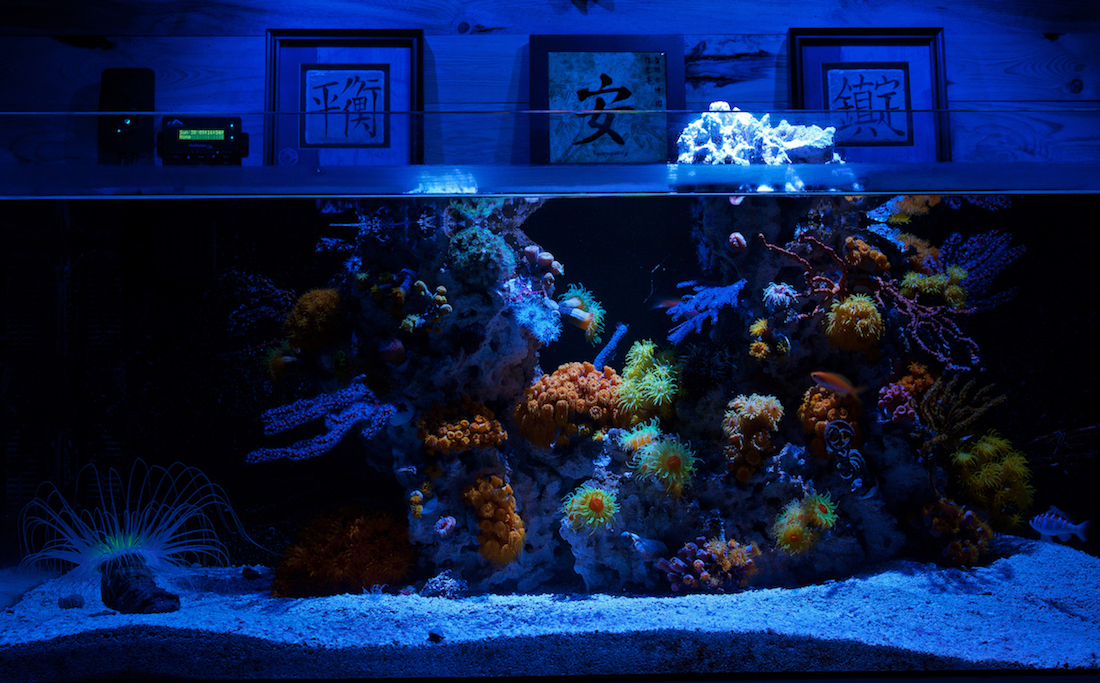
And what about “LPS” and “Chalices” and non-photosynthetic corals? I’d recommend avoiding these corals for your first system, simply because they require an elevated level of attention that you may or may not be ready to commit to- in particular, feeding and a high degree of dedication to monitoring and maintaining the environment very frequently. Now, if you’re coming from a “high-tech-planted tank” background or breed Discus or other challenging species, and are used to applying this level of attention to your aquariums, you might actually be well-equipped, experience-wise, to make a good attempt.
However, experience- fresh or marine- is no guarantee of success, yet many of the skills in the disciplines I just mentioned have “crossover” potential…you’re like a talented artist switching from oils to acrylics. You need to learn the nuances of a different “media”, but the general skill set is the same, for the most part. That being said, I’d sort of plant myself in the “SPS” (don’t ask me why I hate that term) or softy camp to start.
You can’t have it all. But you can have a lot of it! Or, you can always set up multiple tanks. Yep, that’s how this craziness really takes hold…
We’ll keep moving forward with more of this stuff in our next installment. In the mean time-
Stay engaged. Stay observant. Stay disciplined…
And Stay Wet.


